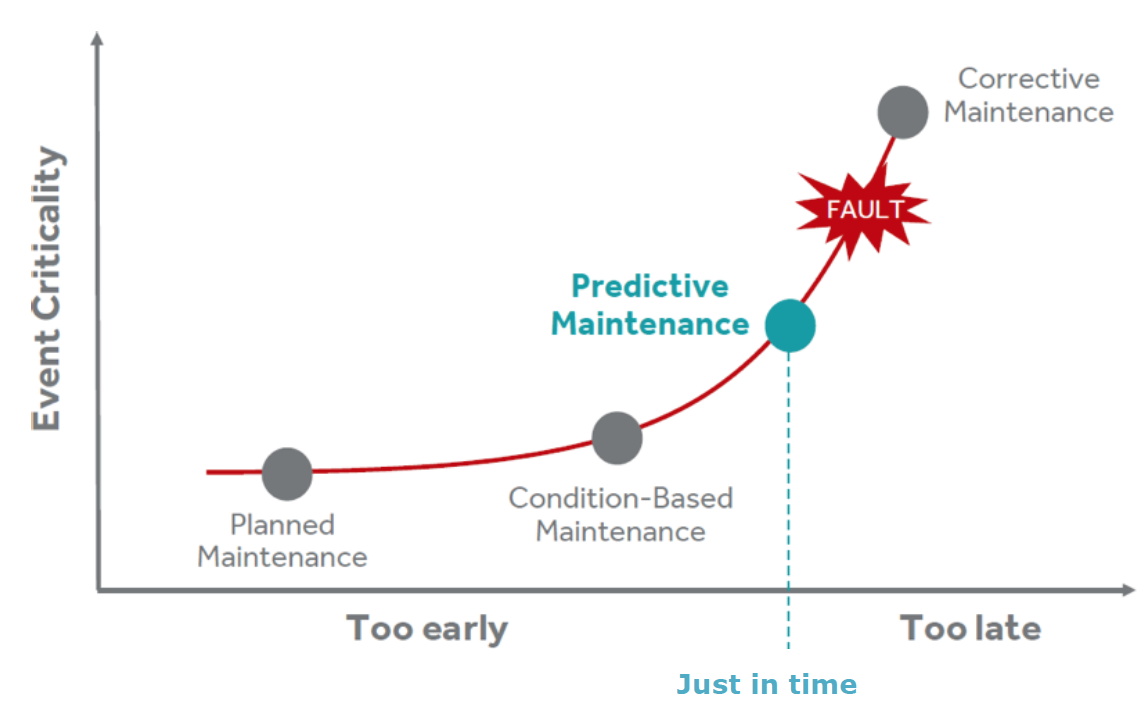PrimaVera Project
No more train delays, power outages, or failure of production machines? The PrimaVera project, funded by the Dutch National Research Agenda (NWA), represents a major step towards this goal. With predictive maintenance, or just-in-time maintenance (maintenance just before a system breaks down), the reliability of infrastructure and production resources can be increased and the costs of maintenance can be reduced.
Existing predictive maintenance techniques only work for small-scale systems and are difficult to scale up. Choices made in one place in the chain have an important influence on other processes in the chain. The choice of a certain type of sensors and measurements influences the type of predictions that can be made, and therefore also the quality of the predictions. That is why cross-level optimization methods are being developed within PrimaVera.
2025 |
Nubia Nale Alves da Silveira; Annemieke Angelique Meghoe; Tiedo Tinga: Quantifying the suitability and feasibility of predictive maintenance approaches. In: Computers & industrial engineering, vol. 194, iss. 110342, 2025. (Type: Journal Article | Abstract | Links | BibTeX)@article{daSilveira2025,Predictive maintenance is a promising concept for maintenance optimization which requires reliable and accurate predictions of a system's lifetime. Despite the many studies on this topic, selecting the best approach is still a topic of debate. In general, predictive maintenance approaches can be roughly classified as knowledge-based, data analytics and physics-based models. However, this classification does not provide maintainers clear guidance on how to select the most suitable approach for a specific case. This work, therefore, presents a selection method for this process. For that purpose, a list of selection criteria was established, and six predictive maintenance approaches were analysed. The proposed selection process is based on two main groups of criteria: the suitability criteria check the match with the desired ambition level of predictive maintenance, while the feasibility criteria identify whether this can be realized, given the labour, models and data available. Finally, three case studies are presented, demonstrating that the tool effectively guides to an optimal approach. |
Bram Ton; Rick Akster: Large Scale Asset Detection Within Railway Scene Point Cloud Data From Mobile Laser Scanning. In: IEEE Access, 2025, ISSN: 2169-3536. (Type: Journal Article | Links | BibTeX)@article{Ton2025b, |
Zhao Kang: Robust Spare Parts Inventory Management. 2025, ISBN: 978-94-6510-653-3. (Type: PhD Thesis | Links | BibTeX)@phdthesis{Kang2025, |
Luc Stefan Keizers: Hybrid Prognostics For Predictive Maintenance. Combining Physics-Based And Data-Driven Methods To Overcome Prognostic Challenges. 2025, ISBN: 978-90-365-6574-5. (Type: PhD Thesis | Abstract | Links | BibTeX)@phdthesis{Keizers2025,Predictive maintenance is a growing research field, aiming to perform maintenance only when it is required. Prognostic algorithms are essential to achieve this, as predictions of upcoming failures help to increase availability of systems, utilize the full life time of equipment and improve maintenance logistics. Since sensors are getting cheaper and data storage and processing have become cheaper and more efficient during the fourth industrial revolution, there is a lot of interest in data-driven prognostic algorithms. However, high data requirements limit applicability is many practical applications. Physics-based prognostic models yield quantitative relations between system usage and degradation independent from historical data, but the development of such physics-of-failure models is complex and expensive. Because both data-driven and physics-based models have their advantages and limitations, combinations of both types of methods have the potential to get rid of the limitations and profit from the benefits. When both loads and the condition of a component can be monitored, physics-of-failure models can be updated in real-time using Bayesian filtering algorithms. This results in updated quantitative relations between loads and degradation, calibrated for a specific component. The first part of this thesis describes how such methods can be applied for components in variable operating conditions and implements it in a generic prognostic framework. These Bayesian filters preferably receive a direct measure of degradation, such as crack length or the amount of removed material. In many practical applications it is only possible to measure indirect consequences of degradation, such as increased vibration levels, elevated temperatures or acoustic emissions. Therefore, the second part of this thesis focuses on improving quantitative diagnostics to act as input for prognostic algorithms. Because of their modularity and applicability in multiple physical domains, bond graphs are proposed to simulate faults to enhance quantitative diagnostics. A combined diagnostic and prognostics framework is developed which is suitable for prognostics under varying operating conditions, when only limited historical run-to-failure data are available. One of the biggest challenges remains validation of the methods on a real-world case study, as the lack of real-world data is one of the biggest challenges from which this research partly originated. |
Roel Bouman: Rethinking Anomaly Detection: From Theory to Practice. 2025, ISBN: 9789465150765. (Type: PhD Thesis | Abstract | Links | BibTeX)@phdthesis{Bouman2025,The field of anomaly detection is rapidly evolving with numerous algorithms and applications. However, the fundamental principles behind anomaly detection are less frequently studied. This thesis aims to evaluate algorithm performance, assess the reliability of autoencoders, and introduce a novel application in power grid load estimation. A comprehensive comparative study on real-world data identifies that only a few algorithms are necessary for effective anomaly detection. Specifically, k-nearest neighbors and extended isolation forest perform well in detecting common anomalies. Autoencoders are increasingly used for anomaly detection, especially in computer vision due to their feature extraction capabilities. However, we analyze the underlying assumptions of autoencoder-based anomaly detection and conclude that these assumptions do not hold in practice, making autoencoders unreliable for this purpose. Applying anomaly detection to the energy sector, we utilize statistical process control and binary segmentation to identify measurement errors and power rerouting in load estimation. By filtering these anomalies, we improve the reliability of power grid load estimates in the Netherlands. Enhancing load estimation through interpretable methods helps reduce unused grid capacity, providing necessary flexibility for the ongoing energy transition. |

